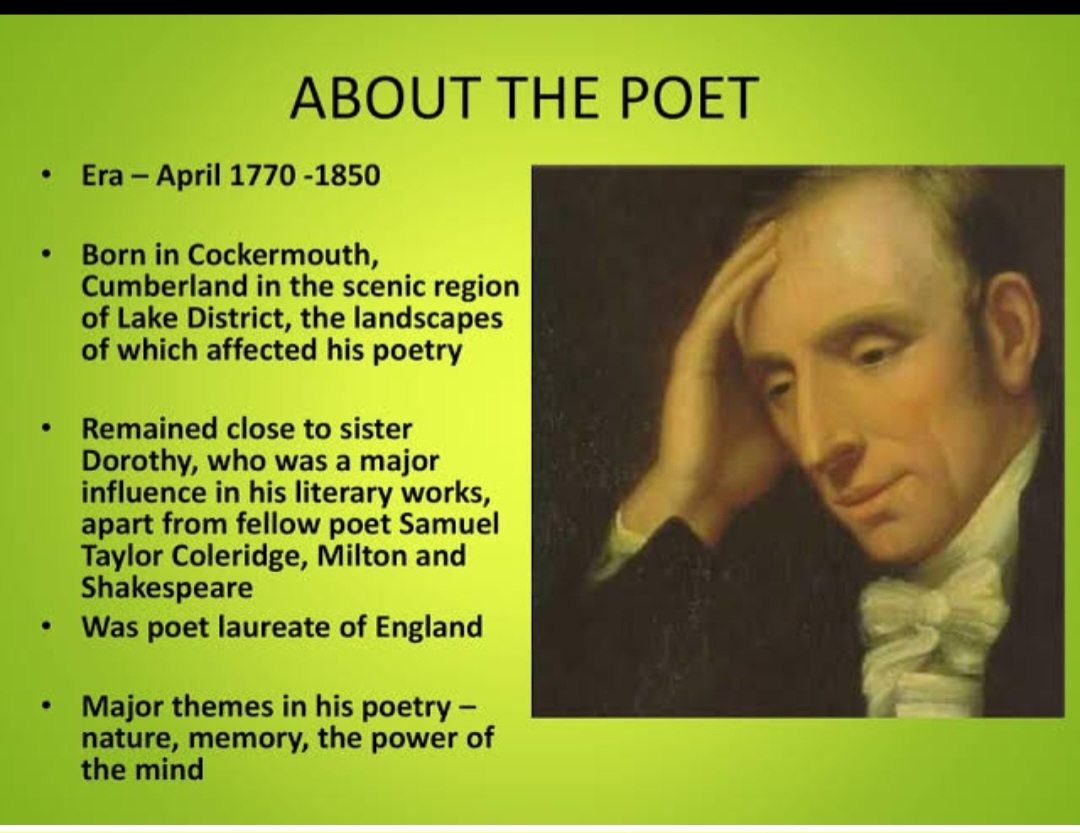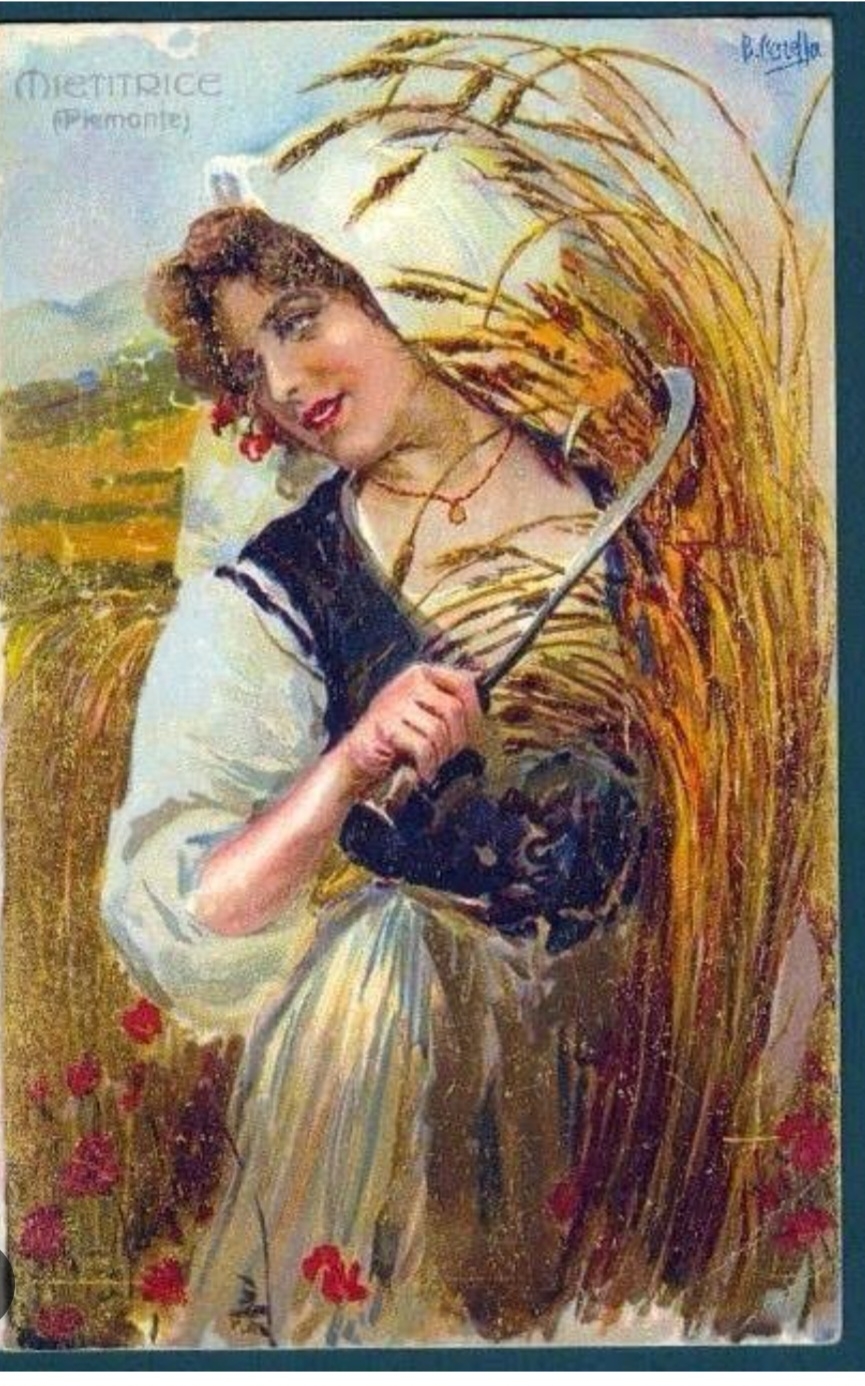Hello readers, I am Divya Jadav a student of English literature. This blog is part of writing activity on paper 103 : literature of Romantics in which I prefer to discuss about William Wordsworth and his famous poem " Solitary Reaper".
"THE SOLITARY REAPER"
Introduction:-
"The Solitary Reaper," poem by William Wordsworth, published in 1807 in the collection Poems, in Two Volumes. It is a pastoral snapshot of a young woman working alone in a field in the Highlands of Scotland, singing a plaintive song in Gaelic.
History of creating of this poem:-
In August of 1803, William Wordsworth, his sister Dorothy, and fellow poet Samuel Taylor Coleridge embarked on a walking tour of the Scottish Highlands. Now if you think a nice backpacking tour through Scotland sounds like a blast, consider this: the journey lasted about 6 weeks, and covered about 660 miles (that's 110 miles a week, or around 15 miles a day). Now maybe 15 miles a day for three days is okay, but for 6 straight weeks? It wasn't easy, to say the least, despite the fact that Wordsworth and Coleridge were used to walking. Toss in the fact that the part of Scotland they were passing through was relatively rural. Roads were bad, even dangerous on occasion, and lodging wasn't always easy to find (especially when it was cold and rainy).
Nevertheless, the trip was definitely inspiring. Upon returning to England, Dorothy wrote a book about the trip that was published (much later) in 1874. While Dorothy's charming little travel narrative was making the rounds, her bro was writing a bunch of poems that he would later describe as "written during a tour in Scotland." One of these poems was "The Solitary Reaper," which was first published in 1807 along with all those others supposedly written during the tour. The book in which they all appeared was called Poems, in Two Volumes.
THE POEM:-
ANALYSIS OF THE POEM:-
Look at her, alone in the field, that Scottish Girl by herself over there. She is cutting the grain and singing to herself. Stop and listen to her or walk on quietly. She cuts and gathers the grain and sings a sad song. Listen: the deep valley is overflowing with her music.
No nightingale ever sang more soothing notes to tired groups of travelers as they rested at an oasis in the Arabian desert. The cuckoo-bird never sang with such an affecting voice in the spring, breaking the ocean’s silence around the Scottish isles.
Won’t anyone tell me what her song is about? Maybe she sings so sadly for old tragedies and ancient battles. Or maybe the song is humbler, about everyday things—the pains and sorrows that everyone endures.
Whatever she was singing about, the young woman sang as though her song would never end. I saw her singing while she worked, bending over to cut the wheat with a sickle. I listened to her without moving. And as I walked on, up a hill, I carried her music in my heart: and I still do, long after I stopped hearing it.
THEMES OF THE POEM :-
In.this poem we find the various important themes .Here we discusse some important themes which we find in this poem.
1) Art and Communication :-
The Solitary Reaper”
Theme Art and Communication
"The Solitary Reaper" is a poem about music: the song a Scottish girl sings as she cuts hay with a sickle. Though the poem’s narrator cannot understand what the girl is actually singing about, the girl’s song sticks with him, its melancholy beauty echoing in his head “long after” its sound has faded. In this way, the poem suggests the ability of art to transcend cultural boundaries and even language itself. Art, in the poem, can communicate feeling or emotion even in the absence of concrete understanding. And yet, at the same time, the poem also communicates a bit of uncertainty about whether poetry itself can offer this connection in the way that music can.
2)Nature and the Poet :-
Wordsworth was one of the leading figures of English Romanticism, an artistic and intellectual movement that swept across Europe at the end of the 18th century. In contrast to the Enlightenment, with its emphasis on scientific reason, Romanticism drew on feelings, often provoked by the solitary contemplation of nature. Wordsworth, for instance, described poetry as the “spontaneous overflow of powerful feelings” “recollected in tranquility”; in other words, poetry is a calm recollection of intense emotion.
“The Solitary Reaper” is a clear example of Wordsworthian Romanticism, since its speaker reflects on a powerful experience of nature from a tranquil distance. Though he does not know what she’s singing about, the speaker seems to ascribe to the reaper a sort of virtuousness and purity on the basis of her simpler existence and relative proximity to nature.
Literary Devices Used in “The Solitary Reaper":-
Literary devices are tools used by writers to convey their emotions, ideas, and themes to make texts more appealing to the reader. William Wordsworth has also used some literary devices in this poem to make it appealing. The analysis of some of the literary devices used in this poem has been listed below.
1) Assonance : Is the reprentation of vowel sounds in the same line such as the sound of /i/ in “Behold her, single in the field” and the sound of /o/ and /a/ in “Yon solitary Highland Lass!”
2) Imagery:used to make the readers perceive things involving their five senses. For example, “Reaping and singing by herself”, “I saw her singing at her work” and “More welcome notes to weary bands.”
3) symbolism:using symbols to signify ideas and qualities, giving them symbolic meanings different from literal meanings. “Cuckoo” and “nightingale” are the symbols of sweet melodies whereas the song of the lady symbolizes her intense pain and distress.
4) Hyperbole: A device used to exaggerate any statement for the sake of emphasis. For example, the below verses exaggerates the impact of her song,
“O listen! for the Vale profound
Is overflowing with the sound.”
Poetic Device:-
1) Rhyme scheme:The poem follows the ABABCCDD rhyme scheme and this pattern continues till the end.
2)ImbicTetratameter:It is a type of meter having four iambs per line. The poem follows iambic tetrameter such as; “Stop here, or gently pass!”
Thankyou for visiting.....💐






